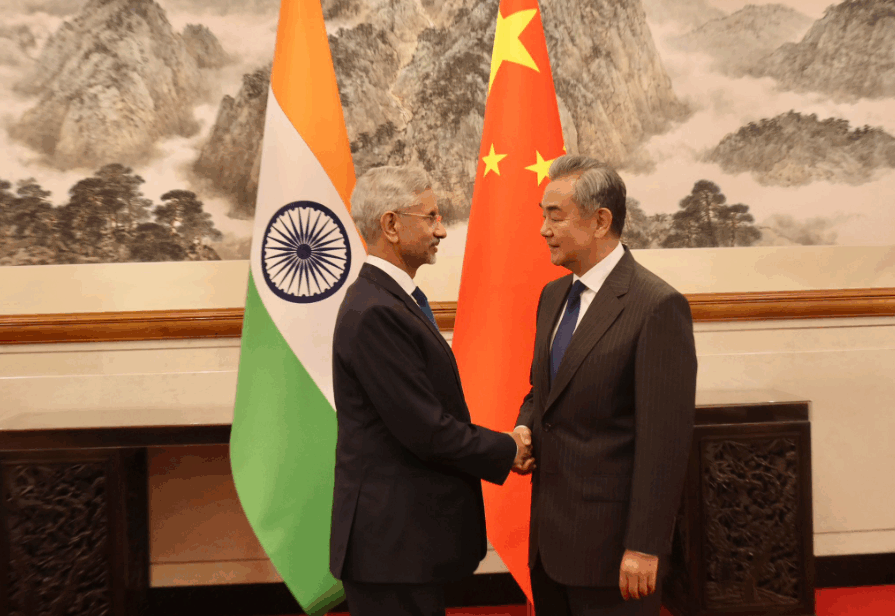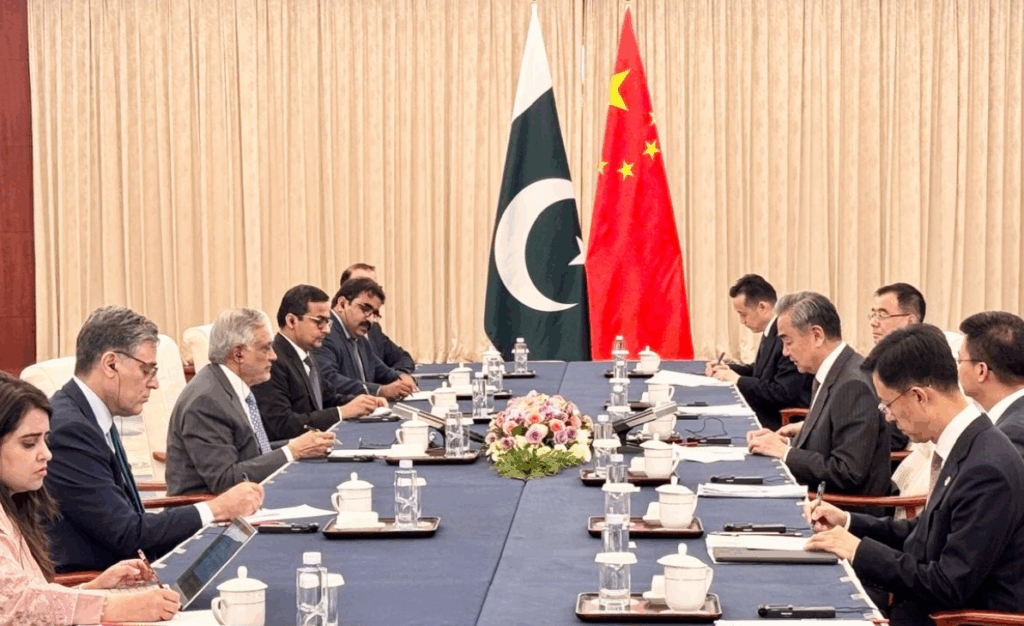
A flurry of high-profile diplomatic exchanges between India and China in recent months, especially since the October 2024 boundary agreement, appears to signal a warming of India-China ties. Most recently, Indian External Affairs Minister S. Jaishankar visited Beijing, his first trip to the country in five years, to discuss bilateral matters before traveling to Tianjin to attend the Shanghai Cooperation Organization (SCO)’s Council of Foreign Minister’s discussion on regional multilateral issues. Jaishankar also called upon China’s President Xi Jinping. His trip followed those by Defense Minister Rajnath Singh and National Security Advisor Ajit Doval in June for SCO meetings. Prime Minister Narendra Modi is also expected to visit China for the upcoming SCO summit at the end of August, his first to the country since 2019 and since the deadly Galwan Valley clashes in 2020. Despite this seeming thaw in India-China relations, however, some of Beijing’s other recent actions reveal a calculated strategy to constrain India.
Beijing’s economic coercion tactics and support to Pakistan during the May 2025 conflict demonstrate how China weaponizes both economic leverage and proxy relationships to maintain strategic dominance over India. For New Delhi, these parallel campaigns could render cooperation with China increasingly difficult. Indian policymakers have pursued a normalization with China in recent months in response to economic imperatives and to advance bilateral ties during a period of geopolitical uncertainty. However, rather than hoping for cooperative coexistence through diplomatic engagement, New Delhi should recognize Beijing’s fundamentally competitive approach and accelerate efforts to diversify economic partnerships, strengthen alternative supply chains, and prepare for an enduring China challenge.
China’s Economic Coercion
China’s economic maneuvers against India over the past few months reveal the fragile foundations of any thaw in the overall bilateral relationship. Since May, over 300 Chinese nationals working as engineers and technicians for iPhone manufacturer Foxconn in India have been recalled. The removal of Chinese workers could slow down the training of the local workforce and the transfer of manufacturing technology from China. The measure is reportedly linked to a new Chinese policy restricting the movement of workers and specialized equipment for high-tech manufacturing to India and Southeast Asia, aiming to prevent companies from relocating production. This specific incident may ultimately have limited impact, as Foxconn replaced the Chinese workers with Taiwanese and Vietnamese staff and the company’s operations in India remain on track. Nevertheless, Chinese curbs on labor and equipment supply chains do impact India’s ability to expand its assembly lines and become a major player in electronics manufacturing, a central objective for the current government.
China’s economic maneuvers against India over the past few months reveal the fragile foundations of any thaw in the overall bilateral relationship.
In the agricultural sector, China has blocked specialty fertilizer exports to India, which are imperative to increase crop yields. Indian farmers are heavily dependent on Chinese products—they account for 80 percent of India’s specialty fertilizer imports. In place of an outright ban, officials are reportedly not inspecting shipments destined for India, a procedural requirement for a shipment to be cleared for export, thereby creating a de facto export blockade through administrative delays.
China’s export restrictions on rare-earth metals have also affected India, as shipment delays are leading to disruptions in automotive production and hampering India’s massive push for electric vehicles. According to a report from early June, China declined at least two applications for India-bound shipments and supplies to automakers have been stuck at Chinese ports for months. The Indian government has stated that they have conveyed their concerns to China on this issue and raised the topic during Chinese Vice Foreign Minister Sun Weidong’s visit to New Delhi in June. Jaishankar also reiterated this point during his visit to Beijing. Despite the superficial warming of relations, these developments signify China’s intent to limit India’s growth in key sectors and head off a potential economic challenger in the long term.
China and the India-Pakistan Conflict
China’s support for Pakistan during the conflict with India in early May, framed within its “all-weather strategic cooperative partnership” with the country, is particularly concerning for India because it demonstrates Beijing’s enduring commitment to Islamabad as a strategic proxy against India. The nature and scope of this support signals that China views Pakistan as an indispensable tool for containing India’s rise and maintaining pressure on multiple fronts. Although it avoided direct military intervention, China provided diplomatic, technical, and material support to Pakistan.
Diplomatically, China expressed solidarity with Pakistan during the conflict, with Foreign Minister Wang Yi stating China “fully understands Pakistan’s legitimate security concerns and supports Pakistan in safeguarding its sovereignty and security interests.” Chinese foreign ministry statements also urged restraint but described India’s military actions as “regrettable,” reinforcing Pakistan’s position.

On the military front, China remains a critical supplier to the Pakistan Armed Forces. 81 percent of Pakistani arms imports come from China and—equally important—Pakistan receives 63 percent of total Chinese arms exports, far and away the largest share. This close defense partnership effectively extends Chinese military influence to India’s western border.
The Indian military also alleges Chinese operational support to Pakistan during the May 2025 conflict. Indian Deputy Chief of Army Staff Lt. Gen Rahul Singh publicly stated that China gave Pakistan “live inputs” on key Indian positions, the first official mention of China’s real-time support in providing strategic military intelligence against India. He further alleged that China was providing all possible support to Pakistan and that the conflict was seen in Beijing as a testing ground for its weapons, including the debut in an active conflict of the J-10C fighter jet.
Pakistan too has alluded to this Chinese assistance: Defence Minister Khawaja Asif implicitly acknowledged Chinese intelligence support when he stated that it is common for friendly nations to share intelligence on threats and noted that both Pakistan and China have “issues” with India. Separately, former Pakistani Foreign Minister and Pakistan People’s Party Chairman Bilawal Bhutto thanked the Chinese ambassador to the United Nations for unequivocal Chinese support during the conflict.
The nature and scope of this support signals that China views Pakistan as an indispensable tool for containing India’s rise and maintaining pressure on multiple fronts.
These tactics are not new to China’s foreign policy playbook. China has pursued more explicit economic coercion against Australia and Lithuania. In addition, China has supported Russia in its war with Ukraine—Chinese Foreign Minister Wang Yi hinted behind closed doors that this support to Moscow is intended to distract Washington from turning its full attention towards China. Similarly, supporting Pakistan keeps India occupied in its neighborhood and adds to the mistrust that has plagued the China-India relationship.
India’s Strategic Outlook
These developments suggest that New Delhi’s traditional approach to China policy of compartmentalizing economic cooperation from security competition is no longer viable. This perspective gained traction in the aftermath of the 2020 Galwan Valley clash when India conditioned progress in the bilateral relationship on a border agreement. Since then, although bilateral diplomatic relations have resumed and the friction points along the Line of Actual Control have been resolved, China-India ties have not reached a meaningful détente. India must recognize that China views the relationship through a fundamentally competitive lens, regardless of diplomatic engagement efforts.
In response, New Delhi should accelerate efforts to diversify economic partnerships, strengthen alternative supply chains, and prepare for sustained strategic competition with China. Such efforts are already underway, with India and Saudi Arabia signing an agreement for long-term supply of fertilizers in July. The Indian government announced the National Critical Minerals Mission earlier this year to reduce India’s heavy reliance on imports and strengthen domestic and global supply chains. Internally, greater emphasis on removing state-level regulatory bottlenecks would help create conditions for private investment. Furthermore, there has been a lot of public debate in India on the national security versus economic considerations of India’s China policy. But the National Security Council Secretariat should collaborate with other ministries and the Ministry of External Affairs’ internal China think tank, the Centre for Contemporary China Studies, to carry out a comprehensive governmental study of the Chinese presence in India, supply chain vulnerabilities, and potential coordination with the private sector on indigenization or diversification efforts. Only by reducing vulnerabilities to Chinese coercion while building countervailing partnerships can India preserve its strategic autonomy and continue its rise as a major global player.
Views expressed are the author’s own and do not necessarily reflect the positions of South Asian Voices, the Stimson Center, or our supporters.
Also Read: How Will New Delhi Navigate the Dalai Lama Succession Row?
***
Image 1: EAM S. Jaishankar via X
Image 2: MFA Pakistan via X


